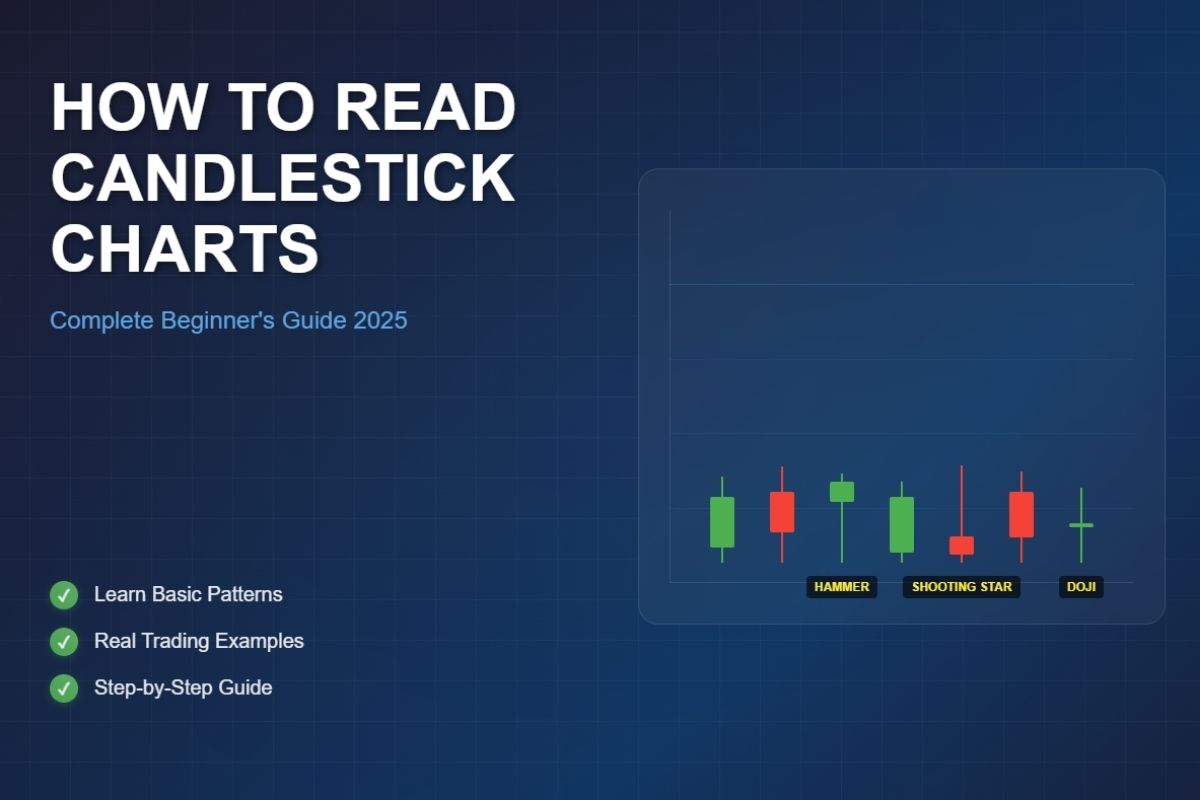Are you confused about the difference between annual percentage yield vs annual percentage rate when managing your finances? Understanding the difference between APY and APR can help you earn more from savings and avoid overpaying on loans.
Many people struggle to compare financial products accurately because they don’t know how these two interest measures work. This guide will show you exactly how to use APY and APR to your advantage, whether you’re saving or borrowing.
Ready to take control of your money? Let’s break down the essentials simple, clear, and actionable with insights from Vietnam-UStrade.
1. What is annual percentage yield (APY)?
APY stands for Annual Percentage Yield. It shows how much money you can earn on your savings or investments over one year, including the effect of compounding interest. Compounding means you earn interest not only on your initial amount but also on the interest added over time.
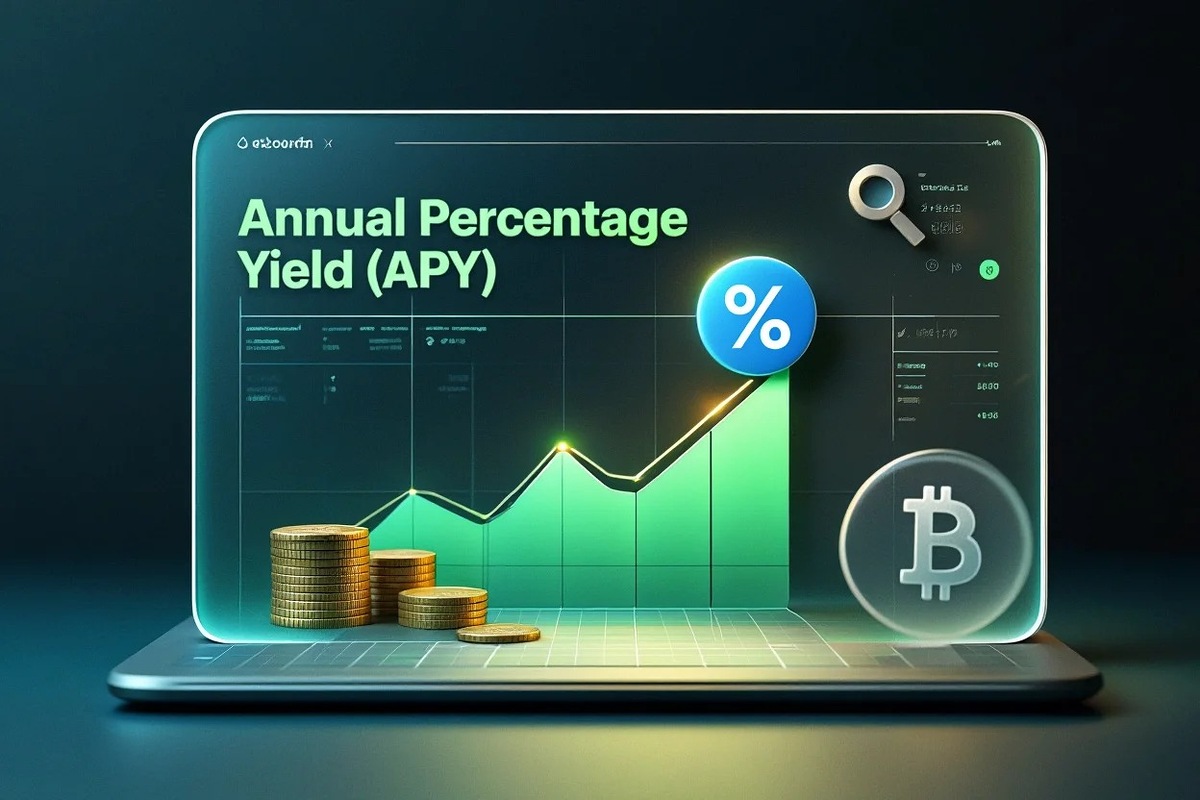
The APY formula can be thought of as: how much your money would grow if interest gets added regularly throughout the year. For example, if you put $1,000 in an account with a 5% APY, after one year, you would have about $1,050, thanks to compounding.
APY is commonly used for:
- Savings accounts
- Certificates of Deposit (CDs)
- Money market accounts
Knowing the APY helps you understand the true return on your savings, which can be higher than the simple interest rate banks sometimes advertise.
2. What is annual percentage rate (APR)?
APR stands for Annual Percentage Rate. It represents the yearly cost of borrowing money, including interest and some fees. Unlike APY, APR usually does not include compound interest. It helps you understand what you will pay to lenders over the year.
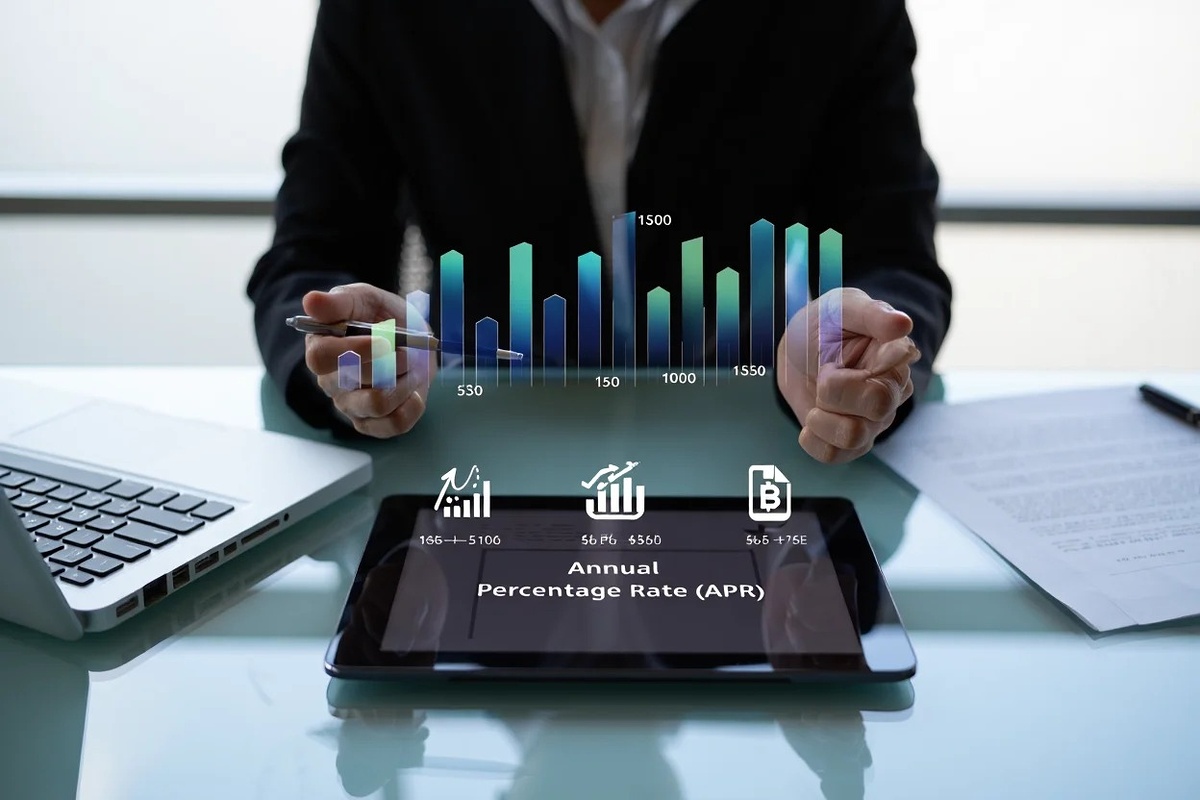
The APR formula shows the total yearly rate you pay based on the loan amount, interest charges, and certain fees. For example, if you borrow $5,000 with a 7% APR, you’ll pay approximately $350 in interest and fees over a year, not counting compounding.
APR applies to many loans and credit products, such as:
- Credit cards ( learn how can you buy bitcoins with a credit card )
- Mortgages
- Auto loans
- Student loans
- Personal loans
Knowing the APR helps you compare loan offers and understand the real cost of borrowing money.
3. Annual percentage yield vs annual percentage rate explained
| Feature | APY | APR |
|---|---|---|
| What it measures | Earnings (savings/investment) | Cost of borrowing |
| Compounding | Included | Not included / simple interest |
| Typical uses | Savings accounts, CDs | Loans, credit cards |
| Who wants it higher/lower | Savers want higher; borrowers want lower | Borrowers want lower; savers n/a |
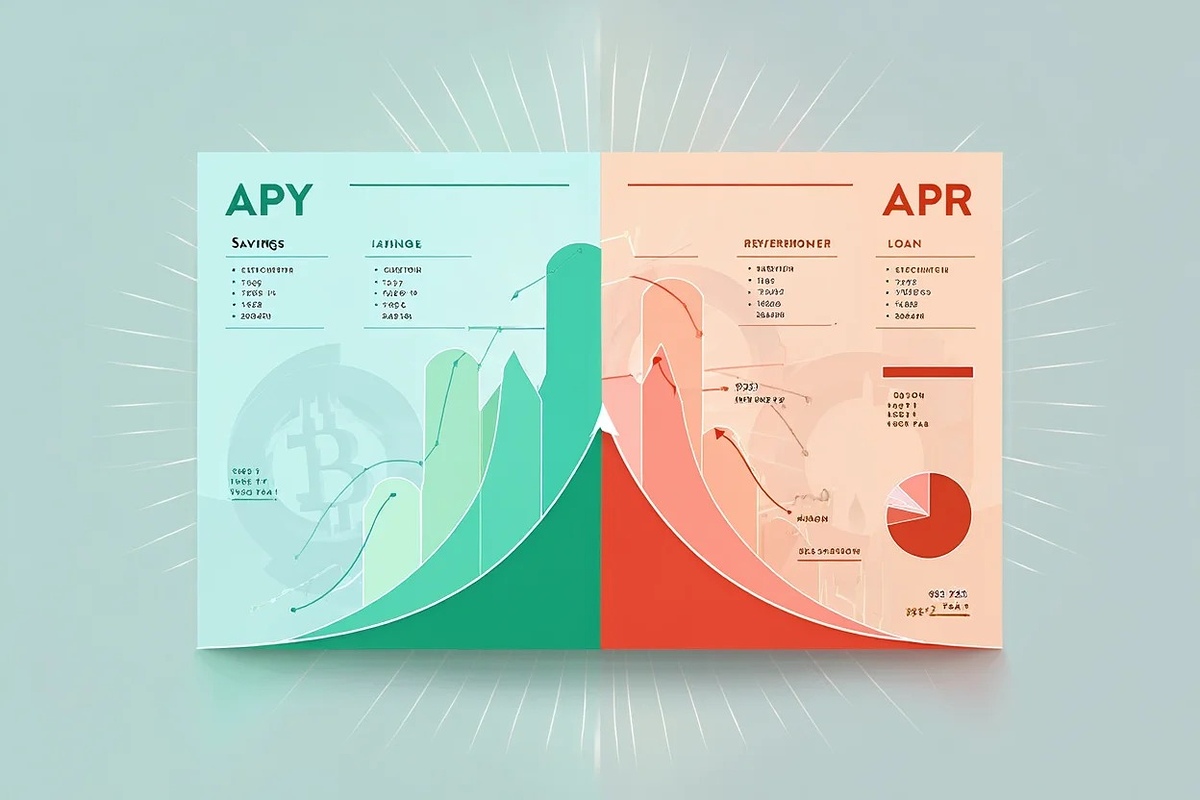
In simple terms, APY tells you how much you earn on your money with interest added on interest, while APR tells you what it costs to borrow money, usually without compounding. If you’re saving, a higher APY means more earnings. If you’re borrowing, a lower APR means less cost.
4. How are APY and APR calculated?
Knowing the formulas behind annual percentage yield vs annual percentage rate helps you make accurate comparisons and avoid misleading assumptions about interest and fees.
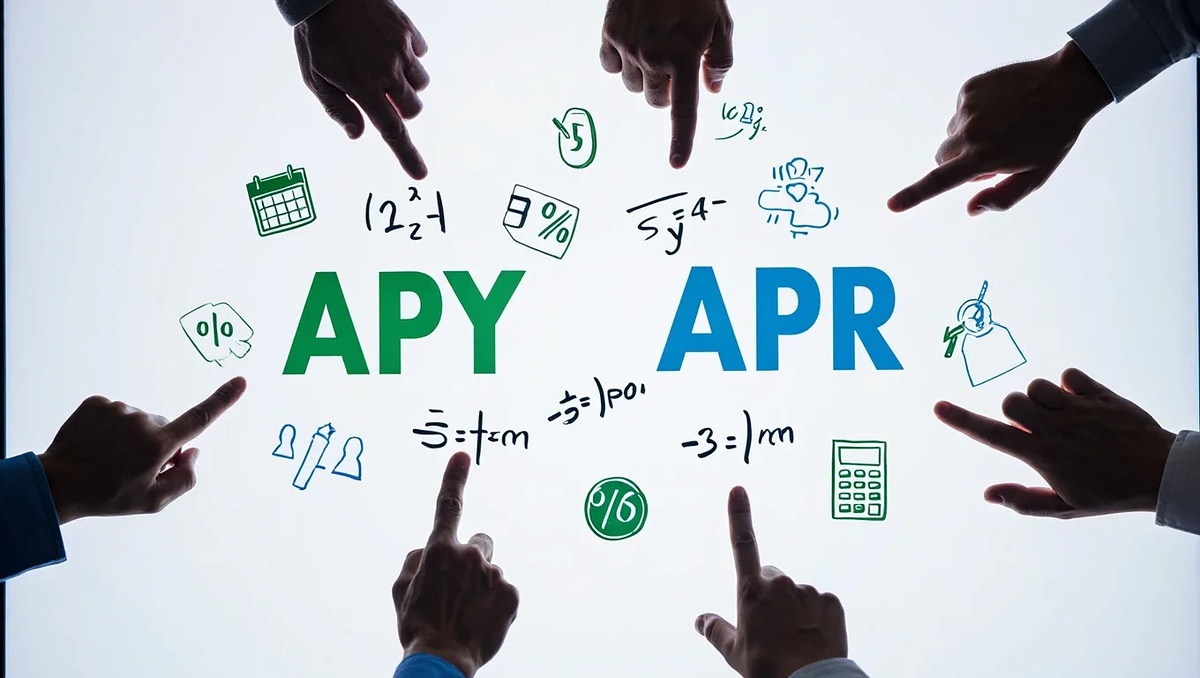
4.1. APY calculation
APY considers the interest rate and how often interest compounds each year. The formula is:
APY = (1 + r/n)n – 1
Where r = annual interest rate (decimal), and n = number of compounding periods per year. For example, if a savings account pays 5% interest compounded monthly (12 times a year), then:
APY = (1 + 0.05/12)12 – 1 ≈ 0.0512 or 5.12%
4.2. APR calculation
APR is simpler it is the annual interest rate plus any fees spread out over the year, without compounding. Lenders often add certain fees to interest to show a total borrowing cost.
For example, a $1,000 loan at 5% interest with $50 fees over one year:
APR = (Interest + Fees) / Principal = ($50 + $50) / $1,000 = 10%
Note that the same 5% interest rate can lead to a different amount paid depending on fees and compounding rules.
| Scenario | Amount at Year End | Explanation |
|---|---|---|
| $1,000 at 5% APY (compounded) | $1,051.16 | Earnings include compounding |
| $1,000 at 5% APR (no compounding) | $1,050.00 | Simple interest, no compounding |
This clear breakdown offers a practical difference between APR and APY with example, helping users visualize how fees and compounding influence real financial outcomes.
5. Key differences in annual percentage yield vs annual percentage rate
Understanding the annual percentage yield vs annual percentage rate comparison helps clarify these differences and ensures you evaluate financial products based on your specific goals saving or borrowing.
- Compounding: APY includes it, boosting earnings over time. APR usually does not, showing cost plainly.
- Purpose: APY measures what you earn; APR shows what you pay.
- Common Products: APY is for savings and investments; APR is for loans and credit.
- Decision Impact: Savers want higher APY to grow money. Borrowers want lower APR to reduce costs.
Think of APY as interest earning interest for you, growing your savings. APR is the straightforward yearly cost you pay to borrow money, no matter what.
6. Why do APY and APR differences matter for consumers?
Confusing APY and APR can cost you money. Savers who focus on APR rates might miss out on better earnings. Borrowers looking only at APY might underestimate their real loan cost.
When saving, focus on APY it shows your actual earnings with compounding. When borrowing, focus on APR to understand true yearly costs including fees.

Here are tips for comparing offers:
- Never compare APY directly to APR; they measure different things.
- Look beyond the interest rate; check fees and compounding terms.
- Ask questions if information isn’t clear on disclosures or websites.
For example, a 3% APR loan with high fees might cost more overall than a 4% APR loan with no fees. Many people overlook the impact of compounding and fees when comparing annual percentage yield vs annual percentage rate, which can result in costly mistakes.
7. How can you find and compare APY and APR on financial products?
APY and APR are usually shown on account statements, loan disclosures, and bank websites. Look carefully in the fine print to catch, When browsing financial products, understanding the annual percentage yield vs annual percentage rate difference helps you identify which metric to focus on APY for savings, APR for borrowing.
- How often interest compounds (daily, monthly, annually)
- Fees included in APR or extra charges
- Introductory “teaser” rates that end soon
Use online calculators from trusted sources like Bankrate, NerdWallet, or official bank websites. These tools help you project real savings growth or loan costs.
Watch out for offers that highlight only the rate without fees or compounding details. That’s often a warning sign.
8. Expert strategies: Maximizing savings & minimizing borrowing costs
To make the best financial choices, always compare annual percentage yield vs annual percentage rate based on your specific goal saving or borrowing.

- Always compare APY values when choosing savings accounts to maximize earnings.
- Pick savings accounts with daily or monthly compounding for faster growth.
- Shop around for loans with the lowest APR to reduce total borrowing costs.
- Check if low “introductory” rates will increase soon and plan accordingly.
- Consider all fees, since they affect APR and the total you pay.
- Use online calculators to see your real returns or costs before committing.
- Ask about fixed vs. variable rates to understand future payment changes.
For example, picking a savings account with 5.2% APY instead of 5.0% might earn you dozens more dollars annually on $10,000.
Explore more trading insights:
- How many confirmations for bitcoin
- How many days after halving does bitcoin peak
- How many people own 1 bitcoin in the world
9. Glossary: Essential terms related to APY and APR
Interest Rate: The percentage charged or earned on money over time.
Compound Interest: Interest earned on the initial amount plus prior interest.
Simple Interest: Interest calculated only on the initial amount.
Principal: The original sum of money invested or borrowed.
Fixed Rate: Interest rate that stays the same during the loan or investment period.
Variable Rate: Interest rate that can change over time.
Teaser Rate: A temporary low rate used to attract customers.
Balance: The amount of money currently held in an account or owed on a loan.
Fee: Extra charges added by banks or lenders.
Disclosure: Official information provided about rates and terms.
10. Common misconceptions & FAQs about APY and APR
10.1 Can APY ever be less than APR?
Usually not, because APY includes compounding which increases yield.
10.2 Does compounding frequency matter?
Yes, more frequent compounding means higher APY and more earnings.
10.3 Can APR include fees? Always?
APR usually includes some fees but may not show all charges.
10.4 Do all countries use these terms the same way?
Terms may vary by country; always check local definitions.
10.5 Is a higher APY always better?
For savers, yes; but check terms and risks.
10.6 Is “interest rate” the same as APY or APR?
No, interest rate is the base rate, while APY and APR include compounding or fees.
11. Conclusion
Understanding the annual percentage yield vs annual percentage rate is critical if you want to make informed financial choices in 2025. Knowing how APY boosts your savings and how APR affects your loan costs can help you earn more and pay less.
Let’s quickly recap:
- APY includes compounding and reflects true savings growth.
- APR shows borrowing costs including fees but usually without compounding.
- Compare APY when saving, and APR when borrowing.
- Use online tools and check terms carefully to avoid traps.
Hope this guide empowers you to evaluate financial offers with clarity and confidence.
Do you still have questions about using APY and APR effectively? Leave a comment or explore more in our financial guides.
Don’t forget to follow the Trader & Trading category on Vietnam-UStrade to stay up to date with the latest insights.

